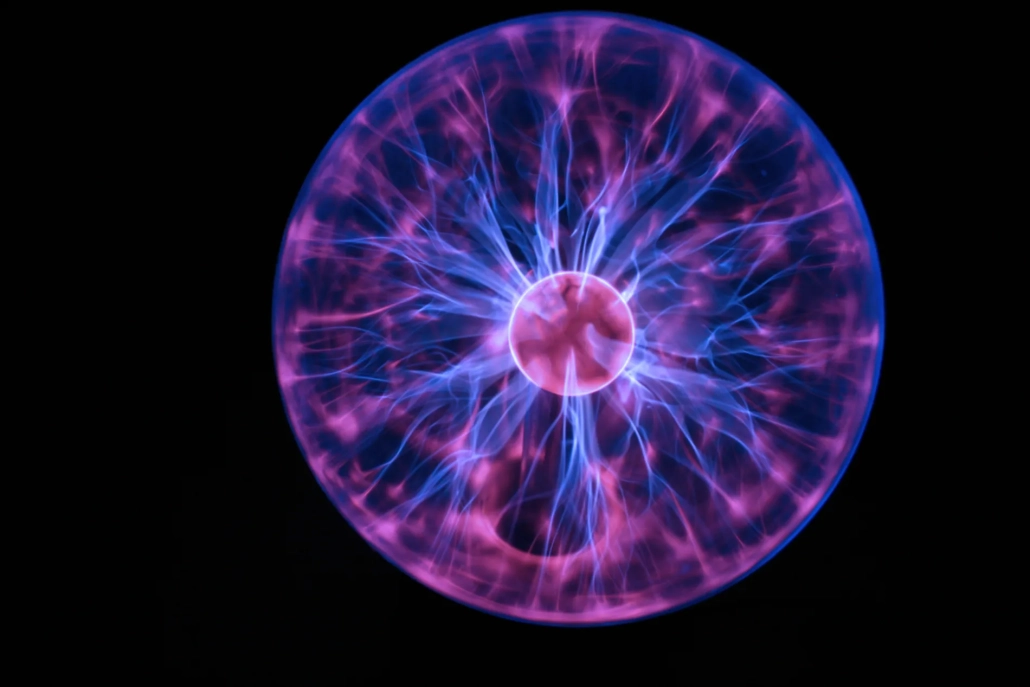WHAT IS PLASMA?
Unveiling the Power of Plasma: The Fourth State of Matter
Plasma is often referred to as the fourth state of matter, distinct from solids, liquids, and gases. When a gas in a vacuum chamber is provided with sufficient energy, atomic links break down, forming electrons, positive ions, radicals, and UV light. This energized state, known as plasma, can be hot or cold and is found in phenomena such as polar lights and luminous flashes in space.
Cold plasma systems by Gambetti Kenologia
At Gambetti Kenologia, we specialize in cold plasma systems. By subjecting low-pressure gases in a vacuum chamber to a high-frequency electromagnetic field, we generate a visible light discharge, creating a highly reactive process gas. This gas interacts with the surface of the product being treated, enabling unique and transformative surface treatments.
Plasma in physics: understanding the fourth state of matter
In physics, plasma represents the fourth state of matter, characterized by the ionization of its gases. When a gas receives sufficient energy, electrons are stripped from its atoms, resulting in free electrons and positive ions. Plasma physics is the interdisciplinary study of this form of matter, exploring its unique properties and applications.
Plasma physics: definition and properties
What is plasma in physics? Plasma boasts excellent electrical conductivity due to the presence of free charges, making it highly responsive to electric and magnetic fields. This characteristic enables a wide range of scientific and technological applications, from astrophysics to nuclear reactor physics. Plasma plays a vital role in advanced technology development, including fusion energy and electronics. Understanding what is plasma energy and which are the temperatures of state of plasma is crucial for knowing and controlling natural and industrial processes involving plasma gas.
Solar plasma and extreme temperatures
Solar plasma, found in the Sun’s corona and photosphere, exemplifies high-temperature plasma. The intense heat and radiation from the stellar core ionize elements, creating an environment of extreme temperatures. Studying solar plasma has not only enhanced our understanding of stars but also advanced the development of terrestrial nuclear reactors based on fusion.
Electrical plasma: dynamic and controllable
Electrical plasma, created using high-frequency electromagnetic fields or other electrical energy sources, is a dynamic and controllable form of plasma. The ability to manipulate electric plasma is essential for various technological and scientific applications. It is used in precision electronics, medicine, and aerospace industries, and for depositing thin films on materials, enhancing surface adhesion or wear resistance, and producing advanced electronic devices. From astrophysics to nuclear reactor physics, plasma electricity plays an important role in the study and development of advanced technologies.
Cold plasma in industrial applications
Cold plasma, generated through controlled electrical discharges or laser radiation, has diverse applications, including medical instrument sterilization. Ongoing research aims to optimize ionization processes by precisely controlling parameters such as frequency, power, and gas composition, unlocking new technological solutions.
Plasma technology: shaping the future
Plasma science continues to reveal new perspectives and innovative applications, pushing the boundaries of our understanding of matter. By studying how plasma is made, we not only gain insights into the workings of the universe but also promise advanced technological solutions that could revolutionize various industrial and scientific sectors.


